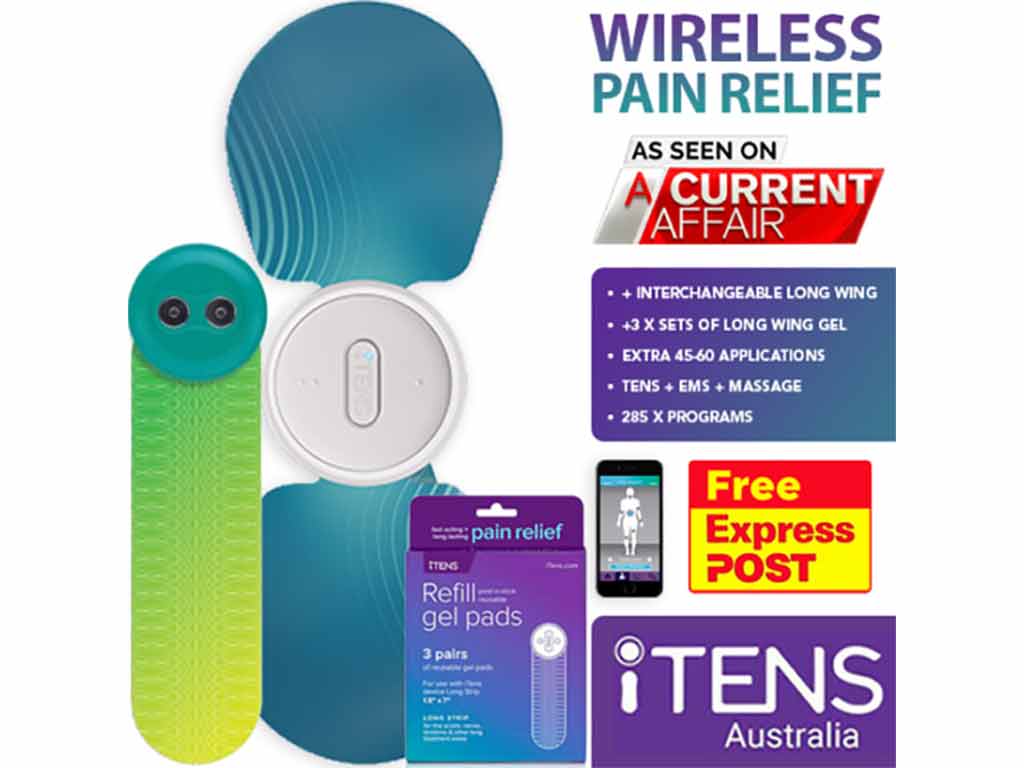
The vegus nerve is essential in regulating various bodily functions. It controls the parasympathetic nervous system, which is responsible for the digestive response of the body. Hence, it helps slow the heart rate, decrease blood pressure, and promote relaxation and calmness. When it is not working well, it can result in issues in the digestive tract and body pain. People can stimulate the nerve using options like Transcutaneous Electrical Nerve Stimulation (TENS) to improve well-being.
The vegus or vagus nerve is also known as the wandering nerve. It is the 10th and longest cranial nerve. Moreover, it connects the brain to various organs, including the heart, lungs, and digestive system. Dysfunction of this nerve has been linked to many kinds of physical and mental health problems. In this article, individuals will delve into the functions of the nerve, explore the commonly associated issues, and shed light on effective stimulation methods to enhance their well-being.
Functions of the Vegus Nerve
The vegus nerve is a vital part of the parasympathetic nervous system. Its primary function is to regulate bodily functions like heart rate, digestion, and respiratory rate. It sends signals to the brain about organ function. Consequently, it helps maintain homeostasis and balance. Additionally, it plays a role in controlling the release of stomach acid and digestive enzymes. Also, it aids in gag reflex.
Another essential function of the vagus nerve is its role in stress response. When activated, it helps calm the fight or flight response of the body. Thus, it promotes relaxation and reduces anxiety. This is why deep breathing and meditation can help stimulate it. Then, people experience a sense of calm and well-being. Moreover, it causes improvements in mood and emotions.
Lastly, a function of the vagus nerve is the communication between the gut and the brain. Individuals often refer to this as the gut-brain axis. This connection plays a crucial role in regulating appetite, food intake, and the feeling of fullness. It also helps transmit signals about the nutritional status of the body and plays a role in the response to inflammation and infection.
Structure of the Vagus Nerve
The vagus nerve involves two branches, which are the right and left vagus nerve. The following is the structure of the two:
- Nucleus tractus solitarius – the prime sensory nucleus of the vagus nerve, responsible for processing sensory information from the internal organs.
- Nucleus ambiguus – a motor nucleus that controls the soft palate, larynx, and pharynx muscles. This allows for functions such as swallowing and speech.
- Dorsal motor nucleus – contains preganglionic parasympathetic neurons that innervate the heart, lungs, and digestive system, regulating their functions.
- Afferent fibres and efferent fibres – the vagus nerve consists of two fibres, controlling their function.

Issues and Conditions Affecting the Vegus Nerve
When the vegus nerve is not functioning correctly, it can lead to various health issues and conditions. This is because the immune system is closely connected to the functioning of this nerve. An example is gastroparesis. It occurs when the internal surfaces of the stomach cannot move food efficiently. This is because the abdominal organs rely on signals from this nerve to coordinate their functions.
Damage to the vagus nerve can result from surgery or injury. Medical conditions, such as diabetes, autoimmune disorders, or inflammatory conditions, can also cause nerve dysfunction. Additionally, improper nerve function disrupts brain activity and can lead to cognitive disorders. The cranial nerve is also associated with conditions like irritable bowel syndrome and fibromyalgia. Hence, people experience pain in the abdomen and muscles.
Other psychiatric conditions also have a connection to the vagus nerve. For instance, depression and Post-Traumatic Stress Disorder (PTSD) have been linked to abnormalities in vagal tone, which is a measure of the activity of the vagus nerve. Low vagal tone has been associated with an increased risk of developing treatment-resistant depression and PTSD. Moreover, anxiety symptoms can impact the nerve.
Symptoms of the Condition
The conditions affecting the vagus nerve can result in various symptoms that can affect different bodily functions. These include hoarseness or voice changes because the vagus nerve innervates the vocal cords. Another symptom is a sudden drop in blood pressure, known as vasovagal syncope. This can cause fainting or dizziness.
Other symptoms of the condition affecting the vagus nerve may include gastrointestinal issues such as bloating, abdominal pain, and diarrhea. Some individuals may also experience excessive sweating, anxiety, and a change in their appetite and weight. Furthermore, they experience a slower heart rate due to heart rhythm disorders.

Stimulation Options for the Vegus Nerve
Stimulating the vegus nerve can significantly impact the overall health and well-being of people. It can help immune cells function properly, reduce inflammation, and improve mental health. There are several options for stimulation, including breathing techniques, certain types of exercise, and electrical stimulation or e-stim devices. Taking slow, deep breaths through the diaphragm can activate the cranial nerve and promote relaxation and stress reduction.
Engaging in aerobic exercises, such as running or swimming, can also stimulate the vagus nerve. Consequently, this improves parasympathetic innervation, which helps regulate blood pressure. A healthy increase in heart rate during exercise can also promote the release of endorphins and offer mitigation of mood disorders like depression and anxiety.
In addition, e-stim machines can directly stimulate the longest cranial nerve of the body. Some examples are TENS and Vagus Nerve Stimulators (VNS). The former provides pain relief and relaxes muscle tension by sending electrical impulses to the nerve fibres. Meanwhile, the latter is effective in treating certain neurological disorders, such as epilepsy and depression.
A Closer Look at TENS
TENS is a popular non-invasive treatment option for individuals suffering from acute and chronic pain conditions. It uses a battery-operated device to deliver low-voltage electrical pulses to the nerves via externally applied electrode pads. The impulses interrupt the pain signals travelling from the spinal cord to the brain, providing temporary relief and promoting healing mechanisms.
A TENS unit can improve blood flow and reduce inflammation. Utilising it for vagus nerve stimulation can have potential benefits for individuals. However, it is essential to consult a healthcare professional before undergoing this type of medical treatment to ensure compatibility and determine the proper settings and usage.
Conclusion
The key role of the vegus nerve is regulating the parasympathetic nervous system, which controls functions like heart rate, digestion, and relaxation. It also functions as a communication pathway between the brain and various organs in the body. Issues with the right or left vagus nerve can lead to a range of conditions, including digestive problems, anxiety, and even heart complications. People may experience symptoms like difficulty swallowing, heart palpitations, dizziness, nausea, or fainting.
Stimulating the vagus nerve can improve the well-being of individuals. One stimulation method is deep breathing because it activates the parasympathetic nervous system. Moreover, they can do exercises to strengthen the vagus nerve. Lastly, they can utilise stimulation devices like TENS and VNS. These devices deliver electrical pulses to the vagus nerve, helping to regulate its function and promote overall health. Those interested in TENS machines can check iTENS from iTENS Australia for wireless units.




















